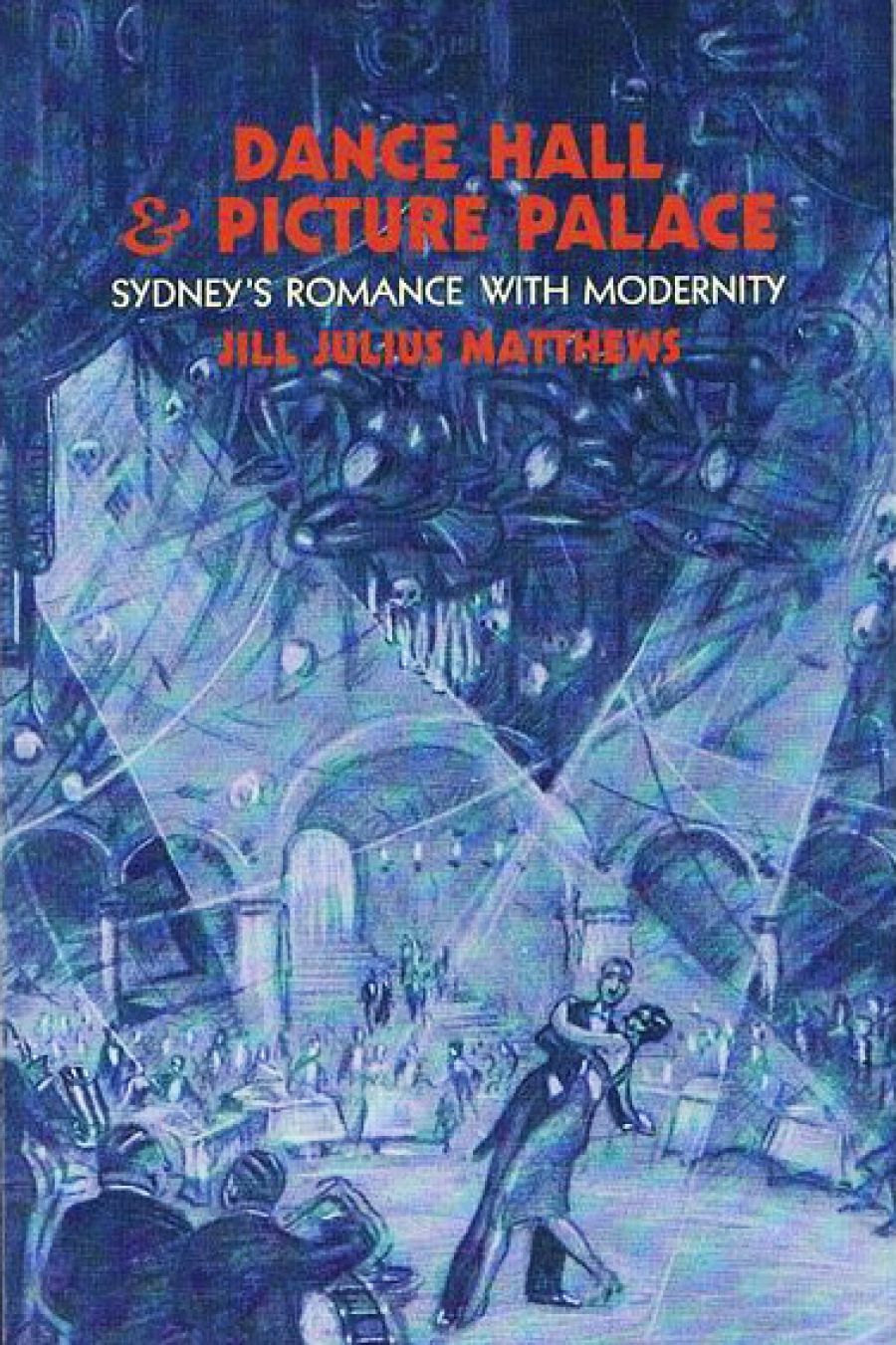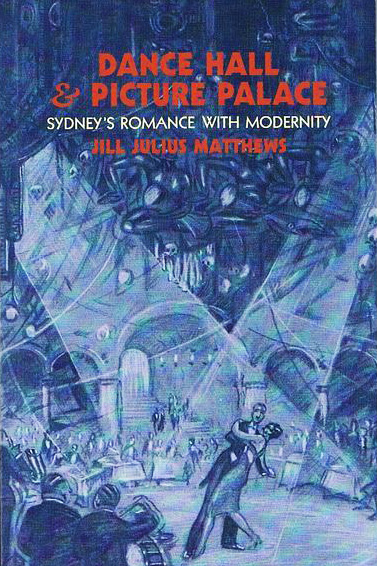
- Free Article: No
- Contents Category: Society
- Review Article: Yes
- Article Title: Mediators of the new
- Online Only: No
- Custom Highlight Text:
It’s Sydney – and Saturday night. The Great Jazz Orgy has begun … a million people are moving, turning, swaying, shuffling to the accompaniment of pianola, gramophone, or jazz band, and are beating out the barbaric time of syncopated melody. (Home magazine, 1923)
Historian Jill Julius Matthews takes us back to Sydney between the 1890s and the late 1920s, when cinema and the phonograph were exciting new imports, their impact on the local culture at once exhilarating and threatening. Matthews examines the way modernity – in the form of popular music, dance and film – was brought to and embraced by Sydneysiders. Her focus is on the ‘mediators’ of the new: entrepreneurs who imported the products and the technique of making them indispensable to people’s lives; the traditionalists who hoped to protect audiences from ‘corruption’ by seductive popular culture; and the government officials who negotiated these voices, seeking to regulate content.
- Book 1 Title: Dance Hall and Picture Palace
- Book 1 Subtitle: Sydney's romance with modernity
- Book 1 Biblio: Currency Press, $32.95 pb, 352 pp
- Book 1 Cover Small (400 x 600):

- Book 1 Cover (800 x 1200):

The promoters of popular music and film quickly cottoned on to a marketing strategy that transcended the individual product. They sought to create a desire for a ‘modern’ way of life, one that could never quite be captured, because it was forever changing, requiring regular updates. This ‘strategy of glamour’, perfected in Hollywood, infused ‘modern’ objects and crazes with an overarching glossy appeal, supported by the creation of the star and fan system.
The Australian experience of modernity, Matthews argues, was closely tied up with developments overseas. This applied equally to the methods used by importers and promoters of jazz and film, and to the response by ‘wowsers’ (or, in the evocative American Progressive lingo, ‘Purveyors of Uplift’) and other, more open-minded critics of modern popular culture.
The interplay between the fascination with and fear of all things American was already firming up. Ninety per cent of feature films screened in Australia in the 1920s were American. The federal and state governments refused to export any Australian films ‘likely to prove detrimental or prejudicial to the Commonwealth of Australia’. This ruled out bushranger, drought and convict stories – a terrible blow to local production. The challenge for film distributors was to release American product here without offending Australian sensibilities, still attached to an outmoded conception of British ‘tradition’.
Matthews uses the trope of ‘romance’ in the broadest sense, encompassing technological innovation, business methods and nation building, as well as the more familiar version, with its heroes and lovers. This representation of the development and reception of modernity as romance, with its narrative of heroic endeavour, is often illuminating, but it does feel forced at times; the malleability of the term undermines Matthews’s approach. She seeks to differentiate her history from Marxist accounts that dwell on the negative experiences of industrialisation, though she acknowledges that hers is simply one story among many. She wants to acknowledge that dancing and movies were refreshing compensations in the lives of the otherwise exploited.
And it was not only the working classes who were seduced. Matthews shows how entrepreneurs such as J.D. Williams and the Doyles worked to create a glamorous and apparently respectable world of popular entertainment, using cross-promotion, grand architecture, modern business methods (sometimes stretched to include bribing officials) and self-regulation of content reinforced by strict government censorship. Cinema-going eventually became a necessary luxury for people of all classes.
By catering to the middle-class desire for respectability, the industry helped neutralise opposition to ‘tinned culture’ expressed by religious zealots and by more high-minded critics, such as Beatrice Tildesley. Critics found themselves lumped together and ridiculed as ‘wowsers’ by publicity-savvy exponents of popular culture. The irony is that both sides of the cultural battle were gendered female, as a way of containing the threat that each posed: ‘wowsers’ were figured as old maids, and popular modernity personified by the ‘modern girl’, the irreverent flapper revelling in the ‘extravagant cacophony’ of the city.
Matthews’s description of a rapidly changing Sydney, its pungent odours, racket and bright lights, makes for compelling reading. She writes clearly and with a subtle sense of humour; she draws us into this world, reminds us of the excitement of the new. When we read that the Palais Royal dance hall regularly drew crowds of thousands, that even pie shops were reincarnated as mini ‘dance palaces’, that cinemas had full orchestras and offered child-minding (exhibitors: hear this!), we grasp the full extent of the Jazz Age in its Sydney incarnation. It strikes us, too, that many of the promotional and management techniques being tried out for the first time in the early 1900s are still with us. Here we are, in 2005, still debating the effects of merchandising and cinematic violence on young audiences, and decrying the delirium of mass dancing (Ecstasy-fuelled raves). We think we are facing the future, but it’s all old news.


Comments powered by CComment